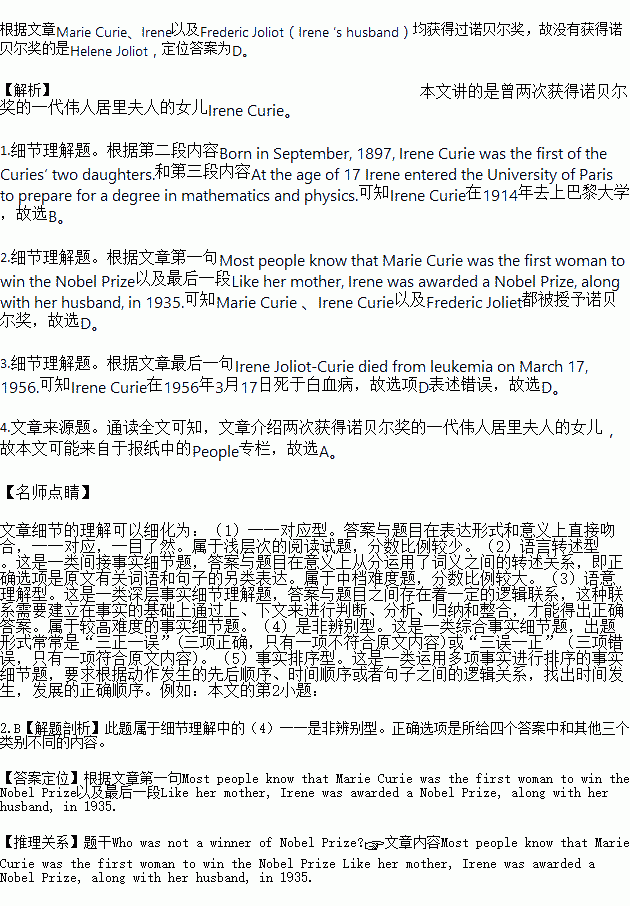题目内容
Most people know that Marie Curie was the first woman to win the Nobel Prize, and the first person to win it twice. However, few people know that she was also the mother of a Nobel Prize winner.
Born in September, 1897, Irene Curie was the first of the Curies’ two daughters. Along with nine other children whose parents were also famous scholars, Irene studied in their own school, and her mother was one of the teachers. She finished her high school education at the College of Sevigne in Paris.
At the age of 17 Irene entered the University of Paris to prepare for a degree in mathematics and physics. When World War I began, Irene went to help her mother, who was using X-ray facilities(设备) to help save the lives of wounded soldiers. Irene continued the work by developing X-ray facilities in military hospitals in France and Belgium. Her services were recognized in the form of a Military’s Medal by the French government.
In 1918, Irene became her mother’s assistant at the Curie Institute. In December 1924, Frederic Joliot joined the Institute, and Irene taught him the techniques required for his work. They soon fell in love and were married in 1926. Their daughter Helene was born in 1927 and their son Pierre five years later.
Like her mother, Irene combined family and career. Like her mother, Irene was awarded a Nobel Prize, along with her husband, in 1935. Unfortunately, also like her mother, she developed leukemia because of her work with radioactivity(辐射能). Irene Joliot-Curie died from leukemia on March 17, 1956.
1.When did Irene Curie go to the University of Paris?
A. In 1897 B. In 1914
C. In 1918 D. In 1924
2.Who was not a winner of Nobel Prize?
A. Marie Curie B. Irene Curie
C. Frederic Joliet D. Helene Joliot
3.Which of the following about Irene Curie is not true?
A. She was the elder child of Marie Curie’s
B. She got a Military’s Medal because of her services to save the wounded
C. She met her husband at the Curie institute in 1924
D. She developed leukemia but was cured
4.Which part in the newspaper may the passage come from?
A. People B. Society
C. Culture D. History
 阅读快车系列答案
阅读快车系列答案
